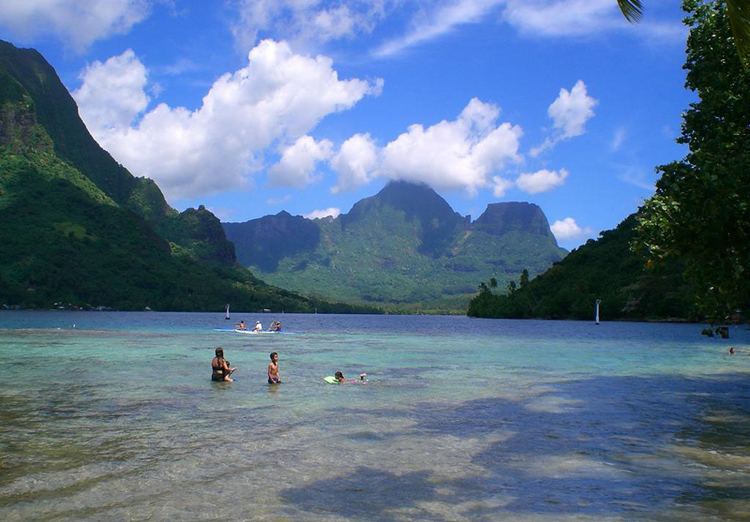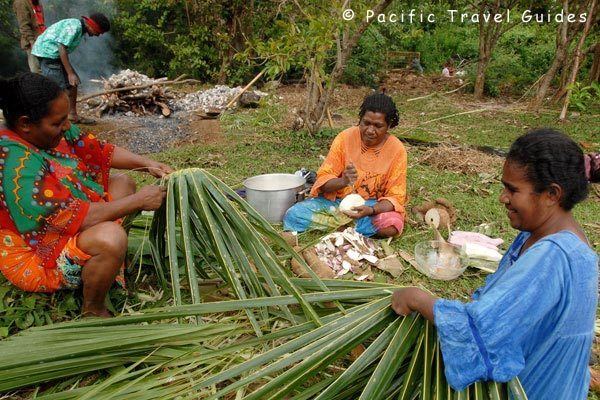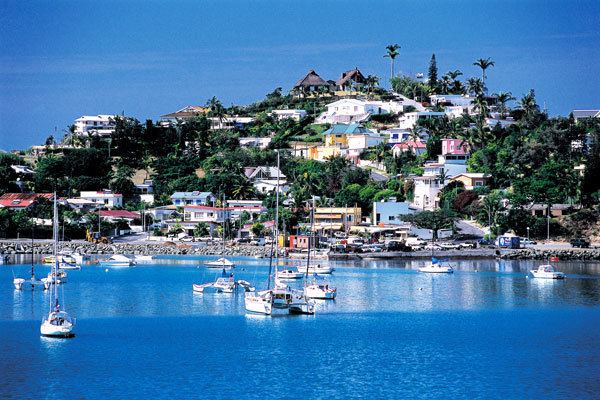Country France Mayor | Population 76,293 (1996) Area 1,643 km2 | |
 | ||
Points of interest Aquarium des Lagons Nouvelle Caledonie, Amedee lighthouse, Musee de Nouvelle Caledonie, Noumea Cathedral, Plage de la Baie des Citrons | ||
Hotel escapade island resort noumea new caledonia tourism
Nouméa ([numeˈa]) is the capital city of the French special collectivity of New Caledonia. It is situated on a peninsula in the south of New Caledonia's main island, Grande Terre, and is home to the majority of the island's European, Polynesian (Wallisians, Futunians, Tahitians), Indonesian, and Vietnamese populations, as well as many Melanesians, Ni-Vanuatu and Kanaks that work in one of the South Pacific's most industrialised cities. The city lies on a protected deepwater harbour which serves as the chief port for New Caledonia.
Contents
- Hotel escapade island resort noumea new caledonia tourism
- Map of Nouma
- History
- Geography
- Demographics
- Historical population
- Migrations
- Languages
- Climate
- Economy
- Transport
- Education
- Twin towns Sister cities
- Popular culture
- References
Map of Nouméa
At the August 2014 census, there were 179,509 inhabitants in the metropolitan area of Greater Nouméa (French: agglomération du Grand Nouméa), 100,237 of whom lived in the city (commune) of Nouméa proper. 66.8% of the population of New Caledonia live in Greater Nouméa, which covers the communes of Nouméa, Le Mont-Dore, Dumbéa and Païta.
History

The first European to establish a settlement in the vicinity was British trader James Paddon in 1851. Anxious to assert control of the island, the French established a settlement nearby three years later in 1854, moving from Balade in the north of the island. This settlement was initially called Port-de-France and was renamed Nouméa in 1866. The area served first as a penal colony, later as a centre for the exportation of the nickel and gold that was mined nearby.

From 1904 to 1940 Nouméa was linked to Dumbéa and Païta by the Nouméa-Païta railway, the only railway line that ever existed in New Caledonia.

During World War II, Nouméa served as the headquarters of the United States military in the South Pacific. The five-sided U.S. military headquarters complex was adopted after the war as the base for a new regional intergovernmental development organisation: the South Pacific Commission, later known as the Secretariat of the Pacific Community.

The city maintains much of New Caledonia's unique mix of French and old Melanesian culture. Even today the US wartime military influence lingers, both with the warmth that many New Caledonian people feel towards the United States after experiencing the relative friendliness of American soldiers and also with the names of several of the quarters in Nouméa. Districts such as "Receiving" and "Robinson", or even "Motor Pool", strike the anglophone ear strangely, until the historical context becomes clear.
Geography
The city is situated on an irregular, hilly peninsula near the southeast end of New Caledonia, which is in the south-west Pacific Ocean.
Neighbourhoods of Nouméa include:
Demographics
The Greater Nouméa urban area (French: agglomération du Grand Nouméa) had a total population of 179,509 inhabitants at the August 2014 census, 99,926 of whom lived in the commune of Nouméa proper.
The Greater Nouméa urban area is made up of four communes:
Historical population
Average population growth of the Greater Nouméa urban area:
Migrations
The places of birth of the 163,723 residents in the Greater Nouméa urban area at the 2009 census were the following:
Languages
At the 2009 census, 98.7% of the population in the Greater Nouméa urban area whose age was 15 years old and older reported that they could speak French. 97.1% reported that they could also read and write it. Only 1.3% of the population whose age was 15 years old and older had no knowledge of French.
At the same census, 20.8% of the population in the Greater Nouméa urban area whose age was 15 years old and older reported that they could speak at least one of the Kanak languages. 4.3% reported that they could understand a Kanak language but not speak it. 74.9% of the population whose age was 15 years old and older had no knowledge of any Kanak language.
Climate
Nouméa features a tropical wet and dry climate with hot summers and warm winters. Temperatures are warmer in the months of January, February and March with average highs hovering around 30 degrees Celsius and cooler during the months of July and August where average high temperatures are around 23 degrees Celsius. The capital’s dry season months are September and October. The rest of the year is noticeably wetter. Nouméa on average receives roughly 1,100 mm (43 in) of precipitation annually.
Economy
Although Nouméa has more sunshine days than any other Pacific Island capital and beaches not far from the city centre, it is not currently a major tourist destination. The cost of living is high and air travel is not discounted to the same extent as to other destinations on the Pacific Rim.
Nouméa is, as of 2007, one of the most rapidly growing cities in the Pacific and has experienced a major housing construction boom in the preceding decade. The installation of amenities has kept pace and the municipality boasts a public works programme. Much of this construction is fuelled by investment from France and it is hoped that over the lifetime of this multi-decade track towards increased autonomy planned under the Matignon Agreements and now the Nouméa Accord, the local economy will become independently sustainable.
Transport
Aircalin, the international airline of New Caledonia, and Air Calédonie (Aircal), the domestic airline, have their headquarters in the city. Aircal's headquarters are on the grounds of Magenta Airport. Nouméa Magenta Airport, within the city, serves local routes. Nouméa's international airport is La Tontouta International Airport, 50 kilometres (31 mi) from the city.
The Nouméa-Païta railway, which was the only railway line that ever existed in New Caledonia, was closed in 1940.
Education
The University of New Caledonia (UNC) goes back to 1987 when the Université Française du Pacifique (French University of the Pacific) was created, with two centres, one in French Polynesia and the other in New Caledonia. In 1997 the decision was made to split the two parts into separate universities and so in 1999 the Université de la Nouvelle Calédonie and the Université de la Polynésie Française were formed.
UNC welcomes around 3,000 local and international students and 100 professors and researchers each year.
The Bibliothèque Bernheim (Bernheim Library) is located in Nouméa.
